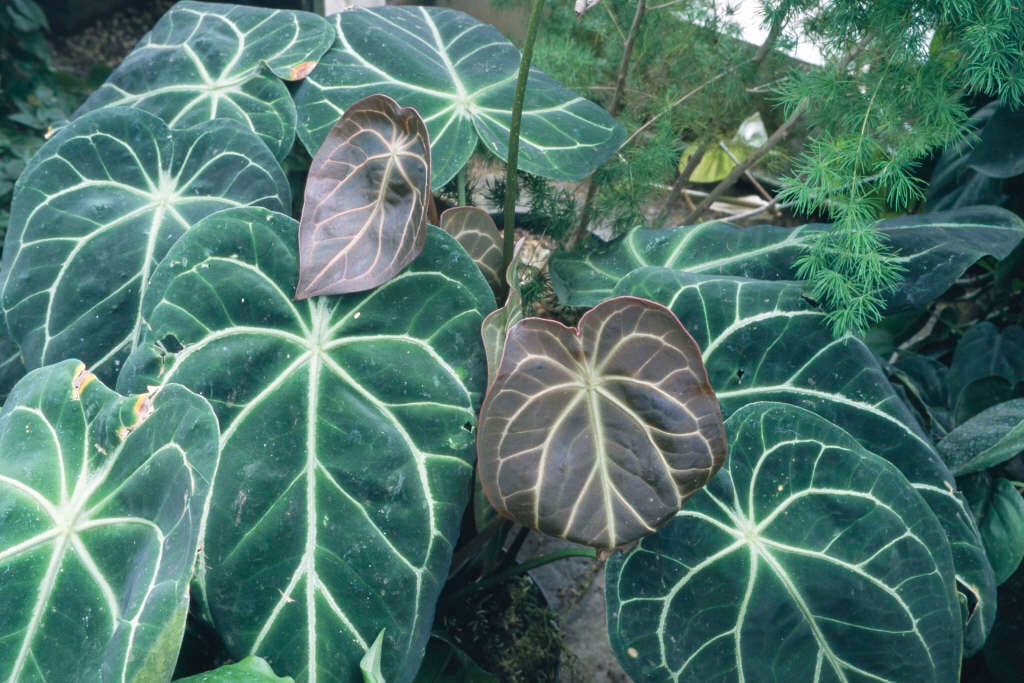Anthurium crystallinum
crystal anthurium
An epiphytic perennial with broadly elliptic or ovate, dark velvety-green leaves to 45cm in length, with white main veins. Flowering spathes to 8cm in length, narrow, green, with yellow spadix, borne intermittently all year round

Buy this plant
Size
Ultimate height
0.1–0.5 metresTime to ultimate height
2–5 yearsUltimate spread
0.1–0.5 metresGrowing conditions
Moisture
Moist but well–drainedpH
Acid, NeutralColour & scent
| Stem | Flower | Foliage | Fruit | |
| Spring | Green Yellow | Green White | ||
|---|---|---|---|---|
| Summer | Green Yellow | Green White | ||
| Autumn | Green Yellow | Green White | ||
| Winter | Green Yellow | Green White |
Position
- Full sun
- Partial shade
Aspect
East–facing or West–facing
Exposure
Sheltered Hardiness
H1ABotanical details
- Family
- Araceae
- Native to GB / Ireland
- No
- Foliage
- Evergreen
- Habit
- Clump forming
- Potentially harmful
- Humans/Pets: Harmful if eaten, skin/eye irritant. Wear gloves and other protective equipment when handling For further information and contact numbers regarding pets, see the HTA guide to potentially harmful plants
- Genus
Anthurium are evergreen perennials, usually epiphytic and sometimes climbing, with large, simple or palmately lobed leaves, and spike-like flowering spadices each subtended by a colourful flat spathe
- Name status
Correct
- Plant range
- Panama to Columbia
How to grow
Cultivation
Grow indoors in bright, indirect light, using an acidic potting mix of two parts ericaceous peat-free compost, one part perlite and one part orchid bark. Water freely and apply an orchid fertiliser every 2 weeks from spring to autumn. Provide high humidity by placing the container on a tray of moist gravel or pebbles. Water sparingly in winter, and keep above 18°C. See Anthurium cultivation for further advice
Propagation
Propagate by division, stem or rhizome cuttings and offsets in spring or summer; or propagate by seed at 24 to 27°C as soon as ripe
Suggested planting locations and garden types
- Houseplants
- Sub-tropical
- Conservatory and greenhouse
Pruning
No pruning required, remove dead leaves or flower stems at the base
Pests
May be susceptible to mealybugs and scale insects
Diseases
May be susceptible to leaf spot, and root rot from overwatering
Get involved
The Royal Horticultural Society is the UK’s leading gardening charity. We aim to enrich everyone’s life through plants, and make the UK a greener and more beautiful place.